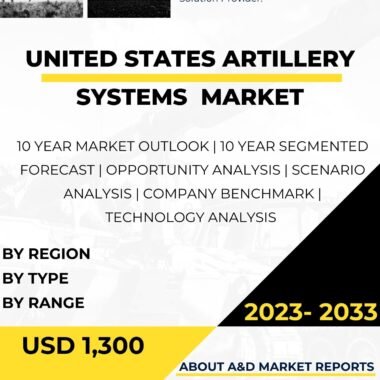Description
United States Naval Ammunition plays a vital role in supporting the combat capabilities of the U.S. Navy’s surface ships, submarines, and aircraft. Naval ammunition encompasses a wide range of munitions, including missiles, torpedoes, bombs, shells, and other ordnance, designed to engage and neutralize various threats at sea and from the air. As the global security landscape evolves, the U.S. Navy continuously invests in advanced naval ammunition to ensure its fleet remains capable of defending national interests, projecting power, and supporting allies around the world.
Naval ammunition is tailored to meet specific operational requirements and mission objectives. Surface ships, including aircraft carriers, destroyers, cruisers, and amphibious assault ships, carry a variety of missiles, surface-to-surface and surface-to-air, to engage enemy ships, aircraft, and coastal targets. Missiles, such as the Tomahawk cruise missile and the Standard Missile family, provide the Navy with the ability to strike targets at great distances with high precision.
Anti-ship missiles, such as the Harpoon missile and the Long-Range Anti-Ship Missile (LRASM), offer the U.S. Navy a formidable capability to engage and neutralize enemy surface vessels. Anti-aircraft missiles, like the Evolved Sea Sparrow Missile (ESSM) and the Standard Missile-2 (SM-2), provide the fleet with an effective defense against airborne threats, including enemy aircraft and anti-ship missiles.
For submarine warfare, the U.S. Navy employs heavyweight torpedoes, such as the Mk 48 and Mk 54, which are capable of engaging both surface ships and submarines. Torpedoes play a critical role in anti-submarine warfare (ASW) operations, enabling submarines to counter potential adversaries and protect the fleet from submarine threats.
Naval aircraft, such as fighter jets and maritime patrol aircraft, carry a variety of air-to-surface and air-to-air munitions. Air-to-surface missiles, such as the Joint Direct Attack Munition (JDAM) and the AGM-84 Harpoon, allow naval aviation to conduct precision strikes against ground targets and enemy ships. Air-to-air missiles, like the AIM-120 AMRAAM and the AIM-9 Sidewinder, provide naval aircraft with the ability to engage and defeat enemy aircraft in aerial combat.
Naval ammunition is stored, handled, and maintained on ships and submarines in specialized magazines and storage areas. These magazines are designed to protect the ammunition from damage and ensure its safe storage during operations and combat. Stringent safety protocols and procedures are followed to ensure the proper handling and loading of naval ammunition on board ships and submarines.
Furthermore, the U.S. Navy is continuously pursuing innovations in naval ammunition technology. Efforts focus on improving the range, accuracy, and lethality of existing munitions and developing next-generation capabilities to address emerging threats. Advanced technologies, such as hypersonic missiles and directed energy weapons, are being explored to enhance the Navy’s offensive and defensive capabilities.
Hypersonic missiles, which travel at speeds greater than Mach 5, offer the potential for rapid and highly maneuverable strike capabilities. These missiles can deliver conventional or nuclear payloads to distant targets with unprecedented speed, reducing response times and increasing the complexity of enemy defense strategies.
Directed energy weapons, such as laser systems, are being developed to provide a cost-effective and scalable means of engaging targets at various ranges. Laser weapons can be used for precision strikes against small boats, unmanned aerial systems (UAS), and other asymmetric threats, complementing existing missile capabilities.
To maintain the reliability and readiness of naval ammunition, the U.S. Navy follows a rigorous inspection, testing, and maintenance regimen. Munitions undergo periodic checks to ensure they remain in optimal condition and adhere to stringent safety standards. Ammunition is rotated, and expired or degraded ordnance is disposed of safely in accordance with established protocols.
The U.S. Navy’s logistics and supply chain infrastructure play a critical role in the distribution and resupply of naval ammunition. Ammunition depots and facilities strategically located around the world ensure that naval assets can be rapidly replenished and sustained during extended operations or combat scenarios.
Additionally, the Navy collaborates with industry partners and research institutions to drive innovation in naval ammunition technology. Public-private partnerships and technology transfer initiatives enable the rapid integration of advancements into the fleet, ensuring that the U.S. Navy maintains a technological edge over potential adversaries.
Naval ammunition logistics and planning are also integral components of the Navy’s operational readiness. During peacetime and crisis situations, meticulous planning and coordination ensure that naval assets are well-equipped with the required munitions to respond effectively to any contingency.
In conclusion, United States Naval Ammunition forms the backbone of the U.S. Navy’s combat capabilities, enabling the fleet to project power, protect national interests, and support allied nations. Naval ammunition encompasses a diverse array of missiles, torpedoes, and bombs designed to engage and neutralize various threats at sea and from the air. The continuous pursuit of innovation, safety, and effectiveness in naval ammunition technology ensures that the U.S. Navy remains a formidable force capable of meeting evolving challenges in an ever-changing global security landscape.




